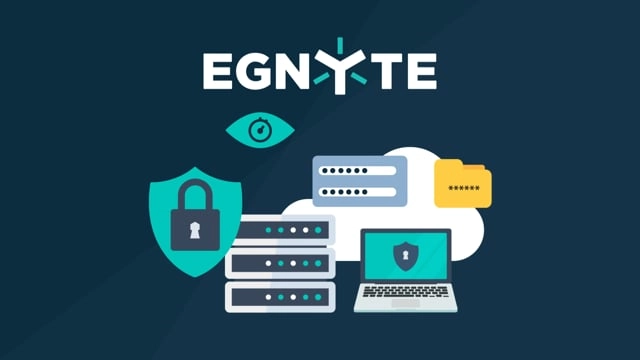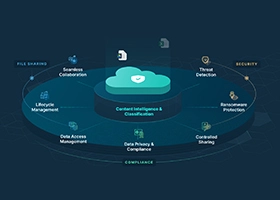Data control is management oversight of information policies for an organization’s information. Unlike data quality, which focuses on fixing problems, data control is observing and reporting on how processes are working and managing issues. Functions include inspection, validation, notification, documentation, issue reporting, and issue tracking.

Drivers for Data Control
- Compliance
- Auditability
- Transparency
- Reportability
- Agility
- Risk awareness
Key Data Control Objectives
- Identify risks.
- Implement policies.
- Provide audit framework.
- Ensure proper protection and use of critical data elements.
- Track and manage data quality against service level agreements.
- Manage the identification, reporting, and remediation of data issues.
Data Control Benefits
- Data is monitored and controlled as it moves from users’ systems to storage devices and applications.
- Data flaws are identified before they cause issues.
- Root causes of issues are identified and remediated.
- Accidental data loss, often caused by mishandling of sensitive data, is quickly identified.
Data Control Dependencies
- Critical data elements are recognized and agreed upon.
- Business definitions are consistent across the organization.
- Tools and processes are in place to measure conformance to service level agreements.
- Framework is in place to assess compliance.
- Processes are documented to report data that does not meet expectations.
Let’s jump in and learn:
Data Control Examples
Data Control for Timeliness
- Specified time in which newly posted records should be available
- Acceptable time for delays
- Expected response time for data requests
- Time-period in which requested data is provided
Data Control for Currency
- Acceptable time between updates for each data element
- Expiration date for each data element
- Specified date / time upon which the data becomes available
- Policies for data synchronizations and replication between systems
- Process for propagating corrections and updates
- Temporal consistency rules
Data Control for Completeness
- Minimum degree of population for each data element
- Assigned values for mandatory attributes in a data set
- Specified optionality for data elements
- Null value rules and enforcement for data elements
Data Control for Consistency
- Specified presentation formats for each data element
- Data presentation format conveys all information within the attributes
- Defined standards for presenting missing information for each data type
- Rules defined for data entry edits and data importation elements
Data Control Processes
These processes are defined by which critical data is governed, including:
- Data registration
- Monitoring and control
- Data exchange and sharing
- Data lifecycle events (i.e., creation, modification, archiving, destruction)
Data Controls for Data Governance
Data controls measure the observance of rules set by data governance policies. They are used to protect and ensure the availability of organizations’ sensitive information in areas such as:
- Compliance
- Auditability
- Transparency
- Reportability
- Agility
- Risk awareness

Data Control Methods
Data control monitors and restricts the transfer of files containing sensitive data to reduce accidental data loss. Organizations can measure the efficacy of data controls based on data governance objectives.
The first step for implementing data control is to establish controls and rules to manage data governance.
Three Steps to Define Data Control Expectations as Rule
- Set information policies to direct data quality rules, which are used to monitor conformance to expectations.
- Put systems and processes in place to measure conformance by setting thresholds and building reports to share metrics
- Establish service level agreements (SLAs) for data controls and define processes for responding to issues and reporting SLA metrics
Types of Data Controls
Data controls can be applied at different levels of granularity:
- Review data quality in the context of its value assignment to a data element.
- Examine the quality of the data within the context of the record.
- Evaluate the completeness of the data set, availability of data, and timeliness of delivery—using data control rules as the baseline.
10 Data Considerations when Implementing a Data Control Plan
- Used to support a published business policy
- Used by one or more external reports
- Used to support regulatory compliance
- Designated as Protected Personal information (PPI)
- Designated critical employee information
- Recognized as critical supplier information
- Designated as critical product information
- Designated as critical for operational decision-making
- Designated as critical for scorecard performance
- Designated as proprietary or trade secret
Data Control and Business Intelligence
Business intelligence systems require data control to provide the quality of data needed to gain accurate insights that support reliable decisions. Business intelligence systems make it easier to analyze data, and data control provides mechanisms that ensure data quality standards are met.
Data Control Challenges
Three data types present significant data control challenges.
- Duplicate Data
Data control must address the challenges associated with duplicate data produced as a result of human error or technical error (e.g., an algorithm that misfired). Without data control, duplicate data proliferates. The results are increased costs for compute and storage resources as well as skewed or incorrect results when data is used for analysis. - Hidden Data
Hidden data presents another challenge. Data control plans must consider the type of data that is not visible with a standard viewer. Common hidden data types include comments, document revision history, and presentation notes. Hidden data is unstructured data that holds great value if found and managed, but this can be difficult. - Inaccurate Data
Inaccurate data can be the result of not finding all of the hidden data, but is usually caused by human error, such as putting incorrect or incomplete information into a field when filling out a form.
Data Control Behind the Scenes
From a software perspective, data control provides a standard mechanism for exchanging data between applications. There are two types of data controls—DATA_CONTROL_SQL and DATA_CONTROL_MAP.
DATA_CONTROL_SQL
Uses SQL-type data to control access to specific data. SQL-type data includes:
- Numeric data types
- Date and time data
- Character and string data types
- Unicode character string data types
- Binary data types
DATA_CONTROL_MAP
Uses a key-value-type data control to access data. Key-value-type data is stored as a key or attribute name with its value. An example of key-value-type is:
- Key is CITY
- Value is New Orleans
Ensure Effective Oversight of Information Policies
Data control benefits range from collecting business artifacts and identifying critical data elements to defining data quality expectations and performing compliance inspections. Ensure that quality across all types with effective data control.
Egnyte has experts ready to answer your questions. For more than a decade, Egnyte has helped more than 17,000 customers with millions of customers worldwide.


